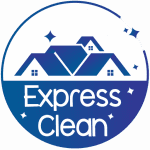The Importance Of Keeping Your Room Clean And Tidy: Best Practices, Materials, Safety & Efficiency
As a facility manager, homeowner, or operations lead in Chicago and its suburbs, understanding the full importance of room cleanliness is crucial for health, safety, and operational efficiency. A clean and tidy environment does more than make a positive impression—it’s foundational to wellness and compliance in residential and professional settings alike.
Why Room Cleanliness Matters
Regular cleaning not only enhances the aesthetic appeal of spaces but also ensures the health and safety of everyone who uses them. Consistent tidiness reduces the risk of allergen build-up, controls contaminants, and promotes mental clarity. According to the Centers for Disease Control and Prevention’s cleaning guidelines, routine cleaning coupled with scheduled deep cleans are proven to minimize germ transmission and keep indoor environments safer for all.
Best Practices for Room Cleaning
- Establish a Schedule: Develop a cleaning routine that fits your property’s usage and occupancy. Consistent timing prevents dirt and clutter from becoming overwhelming.
- Use Zone Cleaning: Break rooms into sections (e.g., floors, surfaces, windows) to ensure each area gets focused attention.
- Adhere to High-Touch Protocols: Prioritize daily wiping of doorknobs, switches, remotes, and handles to limit cross-contamination.
- Maintain Safe Material Use: Understand which cleaning agents are suited to different surfaces—choose pH-neutral detergents for finishes and avoid mixing chemicals.
- Practice Proper Waste Handling: Dispose of trash promptly and separate recyclables to comply with local Chicago waste guidelines.
Table: Selecting Cleaning Agents by Surface & Need
| Surface Type | Recommended Agent | Important Note |
|---|---|---|
| Tile & Laminate | pH-neutral cleaner | Prevents residue; safe for most finishes |
| Glass & Mirrors | Ammonia-free glass spray | Reduces streaks and fumes |
| Wood Surfaces | Mild soap & water or wood polish | Avoid high moisture to prevent warping |
| Textiles (curtains, soft surfaces) | Laundry-safe detergent | Check label instructions for temperature |
Key Safety & Compliance Considerations
1. Personal Protective Equipment (PPE): Always wear gloves when applying liquid chemicals and consider masks if dust or aerosols are present. For professional settings, goggles may be necessary when using stronger disinfectants.
2. Dwell Time: Cleaning products often require a “dwell time” — the minimum period a surface must remain visibly wet for effective disinfection. Check labels: many require at least 5–10 minutes.
3. Cross-Contamination Controls: Use color-coded cloths or mops (for example, red for bathrooms, blue for kitchens) to reduce the risk of spreading germs between rooms.
4. Proper Storage: Store chemicals securely and away from children or high-traffic areas, in compliance with OSHA and Illinois state regulations.
Scheduling for Maximum Efficiency
Optimizing your cleaning schedule reduces downtime and helps maintain compliance, especially for facilities in the Chicago area. Implement digital reminders for deep cleans and integrate spot checks for high-traffic zones. This strategy not only keeps spaces fresh but also ensures nothing is overlooked—contributing to both operational flow and ongoing inspection readiness.
Pro Tips: Room Cleanliness for Health & Wellness
- Use environmentally-safe products for day-to-day cleaning.
- Apply dust control strategies outlined in our guide on dust removal solutions.
- Learn more about the physical and mental health benefits in how cleaning helps reduce anxiety.
For those preparing for a move or periodic deep clean, consider referencing this comprehensive new home cleaning checklist for added guidance.
Common Materials and Chemistry FAQs
Are all-purpose cleaners truly universal?
No. While convenient, many all-purpose cleaners can damage delicate surfaces or leave residues. Always check the product’s pH and intended use before applying.
Which chemicals should not be mixed?
Never combine bleach with ammonia or acids (like vinegar), as this produces toxic fumes. Maintain separate storage and cleaning gear to prevent accidental mixing.
Conclusion: Setting a Standard for Room Cleanliness
Whether you manage a busy office, oversee residential properties, or just want a healthier home, keeping your room clean and tidy is a cornerstone of safety, comfort, and operational excellence. In Chicago’s dynamic environment, applying these cleaning best practices will help uphold property value, ensure compliance, and foster wellbeing.
When specialized help is needed, book office cleaning in Chicago with our professional team. Or, for transition periods, schedule move-out cleaning for hassle-free service and peace of mind.
About the Author:
Reviewed by: Express clean Team
With over 20 years of experience in commercial & residential cleaning operations in Chicago and the surrounding suburbs, our team is passionate about delivering safe, compliant, and efficient solutions tailored to every client’s unique needs.



House Cleaning Service, Same Day Cleaning, regular cleaning, Chicago Cleaning Services, House Service in Evanston IL, House Cleaning Service Winterfield Il, House Service Clean in Skokie, Cleaning Service House in Highland Park IL, Cleaning House Services in Wicker Park IL, House Service Clening in Des Plaines





